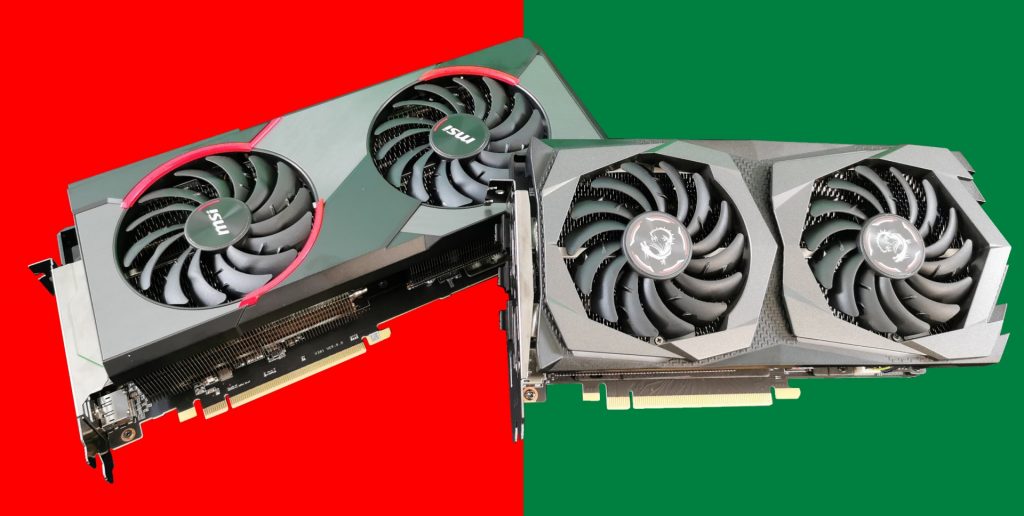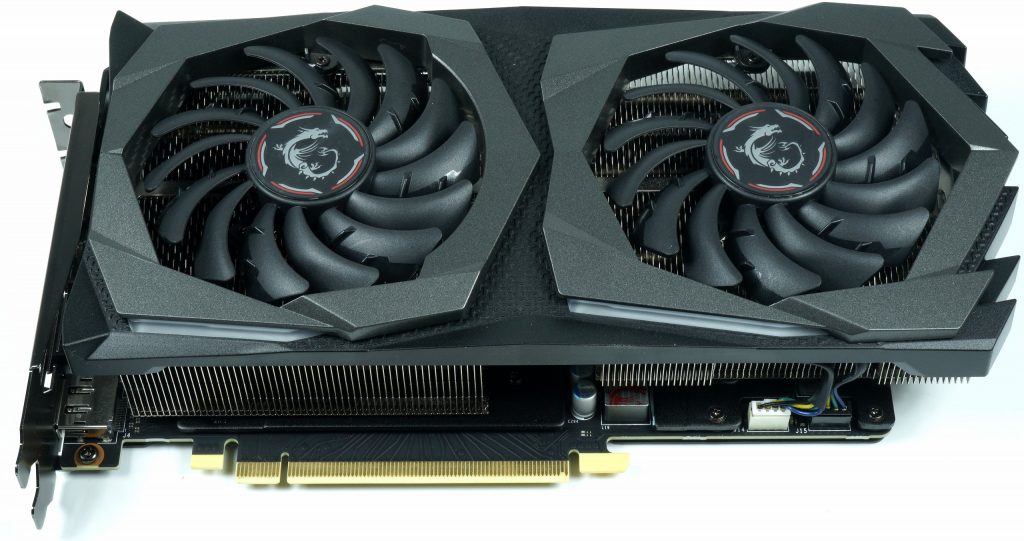To understand the meaning of it all, you should read my article "Radeon RX 5600 XT with new BIOS and stable RAM without Flash! AMD Limits and Benchmark". Because there I describe very precisely how AMD with the new BIOS actually presses the entire overclocking margin of the card into the factory settings in order to be able to offer the GeForce RTX 2060 paroli.
Since I already guessed at the launch item of the Radeon RX 5600 XT that there was an almost borderline overclocking, I deliberately did not test the Founders Edition of Nvidia for the GeForce, but also a very overclocked model already very much overclocked from the factory. I like to accept criticism from both sides, so that in today's article I have overclocked both cards to their stable limit and then compare these results with the initial situation, i.e. the old BIOS of the RX 5600 XT and what Nvidia with the GeForce RTX 2060 FE.
Overclocking limits with huge differences
For overclocking the AMD card, I choose an MSI Radeon RX 5600 XT Gaming X 6GB with the new BIOS of gaming Z and for the GeForce also the then top model of MSI, the GeForce RTX 2060 Gaming X 6 GB with the flashed performance data of the Gaming Z. While I can push up the clock limit for the Radeon in the Wattman by a heartbreaking 40 MHz and raise the power limit by a fictitious 20%, the boost clock at Nvidia is not limited by the slider, but by the meagre power limit that only raises by 5% Let. For this, I was able to increase the memory clock with the GeForce from 1750 MHz to 1850 MHz without damage, although it goes further, but brings nothing more.
The Radeon card ran at an average of 1710 MHz in Shadow of the Tomb Raider after the OC in the game as much as 20 MHz faster, an increase in performance of less than one percent compared to the new BIOS. So you can see that the card is completely exhausted and you can practically forget the overclocking. There is nothing more to come, as bad as that is. Here, the AMD driver has been proven to be very restrictive to protect the RX 5700. Compared to the old BIOS, however, it is up to 20%, which is brutal. Incidentally, the same 14 Gbps memory from Micron is installed on both cards, which here on the GamingX (with the Gaming-Z-BIOS) already at 1750 MHz sporadically leads to flickering (Wolfenstein Youngblood, SotTR).
The factory-overclocked MSI RTX 2060 Gaming X 6GB ran on average across all benchmarks just over 3 percent faster than the RTX 2060 FE. If you take advantage of the maximum power limit of the card, you can also extract another 3% or more from the factory overclocked MSI card, which was good for 6 to 8 percent performance growth compared to the Founders Edition. With stable 2040 to 2055 MHz and 1850 MHz for memory, the variances and image history improve once again.
But we can see how this will affect the benchmark bars on the next page, where I have again benchmarked all the games of the launch article with the maximum OC settings and the Founders Edition. The power consumption of the Radeon RX 5600 XT only increases by approx. 3 to 4 watts, which explains the low performance growth. The RTX 2060 is about 10 watts more for a good 3 to 5 percent increase compared to the factory OC of the MSI card.
Test system and evaluation software
As always, I benchmark with my own PresentMon GUI and the interpreter software, which fills the Excel charts and the graphical output (and only the) so extra- or so. interpolates that all graphs are exactly long, creating a uniform and comparable time line. The remaining evaluations up to percentiles and bar graphics are based on the real raw data from the measurement. The benchmark system is new and has been upgraded in some areas. That's one of the reason why I've completely re-benchmarked all the games and cards.
I have also summarized the individual components of the test system in tabular form.
| Test System and Equipment |
|
|---|---|
| Hardware: |
AMD Rayzen 9 3950X 4x 8GB G.Skill FlareX DDR4 3200 |
| Cooling: |
Alphacool Ice Block XPX Pro (AM4, 2066) Alphacool Ice Grinder (modified) Thermal Grizzly Kryonaut |
| Case: |
Lian Li T70, Raijintek Paean Closed cCse / Open Benchtable |
| Monitor: | BenQ PD3220U |
| Power Consumption: |
Non-contact direct current measurement on PCIe slot (riser card) |
| Thermal Imager: |
1x Optris PI640 + 2x Xi400 Thermal Imagers Pix Connect Software Type K Class 1 thermal sensors (up to 4 channels) |
| Acoustics: |
NTI Audio M2211 (with calibration file) Steinberg UR12 (with phantom power for the microphones) Creative X7, Smaart v.7 Own anechoic chamber, 3.5 x 1.8 x 2.2 m (LxTxH) Axial measurements, perpendicular to the center of the sound source(s), measuring distance 50 cm Noise emission in dBA (slow) as RTA measurement Frequency spectrum as graphic |
| Os: | Windows 10 Pro (1909, all Updates) |




































Kommentieren